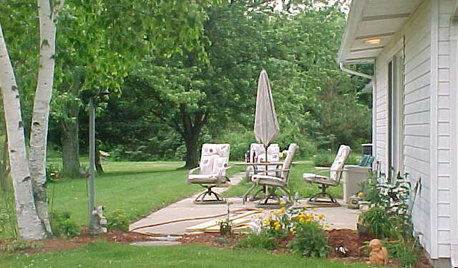Corn Height Question
dilbert
17 years ago
Related Stories

SUMMER FRUITS AND VEGETABLESHow to Grow Your Own Fresh, Sweet Corn
Here's how to plant and care for your own mini cornfield
Full Story
KITCHEN DESIGN9 Questions to Ask When Planning a Kitchen Pantry
Avoid blunders and get the storage space and layout you need by asking these questions before you begin
Full Story
LIGHTING5 Questions to Ask for the Best Room Lighting
Get your overhead, task and accent lighting right for decorative beauty, less eyestrain and a focus exactly where you want
Full Story
FEEL-GOOD HOMEThe Question That Can Make You Love Your Home More
Change your relationship with your house for the better by focusing on the answer to something designers often ask
Full Story
REMODELING GUIDESPlanning a Kitchen Remodel? Start With These 5 Questions
Before you consider aesthetics, make sure your new kitchen will work for your cooking and entertaining style
Full Story

CURB APPEAL7 Questions to Help You Pick the Right Front-Yard Fence
Get over the hurdle of choosing a fence design by considering your needs, your home’s architecture and more
Full Story

BATHROOM DESIGNHow to Match Tile Heights for a Perfect Installation
Irregular tile heights can mar the look of your bathroom. Here's how to counter the differences
Full Story
DECORATING GUIDESEasy Reference: Standard Heights for 10 Household Details
How high are typical counters, tables, shelves, lights and more? Find out at a glance here
Full Story





Brian_NY_NJ_PA
dilbertOriginal Author
Related Professionals
Marina Landscape Architects & Landscape Designers · Anderson Landscape Contractors · Surprise Landscape Contractors · Clark Landscape Contractors · Kahului Landscape Contractors · Lebanon Landscape Contractors · Middletown Landscape Contractors · Northport Landscape Contractors · Wailuku Landscape Contractors · Northlake Landscape Contractors · Golden Glades Swimming Pool Builders · San Lorenzo Swimming Pool Builders · Oak Grove Carpenters · Parsippany Carpenters · Whitney CarpentersdilbertOriginal Author
sandbagger
gianteggplant
franktank232
dilbertOriginal Author
mrwatson
belogose
linu5
Brian_NY_NJ_PA
linu5
Brian_NY_NJ_PA
linu5
linu5
linu5
linu5
linu5
Brian_NY_NJ_PA
linu5
Brian_NY_NJ_PA
Brian_NY_NJ_PA
ncraven
crazyseeds.com